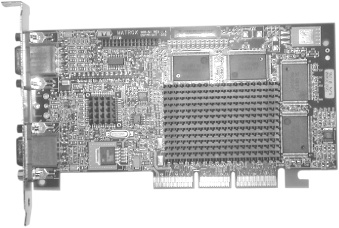Installing and Removing Expansion Cards
Expansion cards are circuit boards that you install in a PC to provide functions that the PC motherboard itself does not provide. For example, many motherboards don’t include video circuitry. PCs built with such motherboards use a separate video adapter expansion card to provide such circuitry. Internal modems, sound cards, network adapters, and disk controllers are other commonly used expansion cards. Figure 2-5 shows a typical expansion card.

Figure 2-5. An expansion card
Each expansion card plugs into an expansion slot located on the motherboard or on a riser card that attaches to the motherboard. The rear panel of the PC chassis includes a cutout for each expansion slot, which provides external access to the card. The cutouts for vacant expansion slots are covered by thin metal slot covers that are secured to the chassis. These covers prevent dust from entering through the cutout and also preserve the cooling airflow provided by the power supply fan and any auxiliary fans installed in the system.
To install an expansion card, remove the slot cover, which may be secured by a small screw or may simply be die-stamped into the surrounding metal. In the latter case, carefully twist off the slot cover using a screwdriver or your needlenose pliers. If you need to replace the slot cover later, secure it to the chassis using a small screw that ...
Get PC Hardware in a Nutshell, 3rd Edition now with the O’Reilly learning platform.
O’Reilly members experience books, live events, courses curated by job role, and more from O’Reilly and nearly 200 top publishers.

